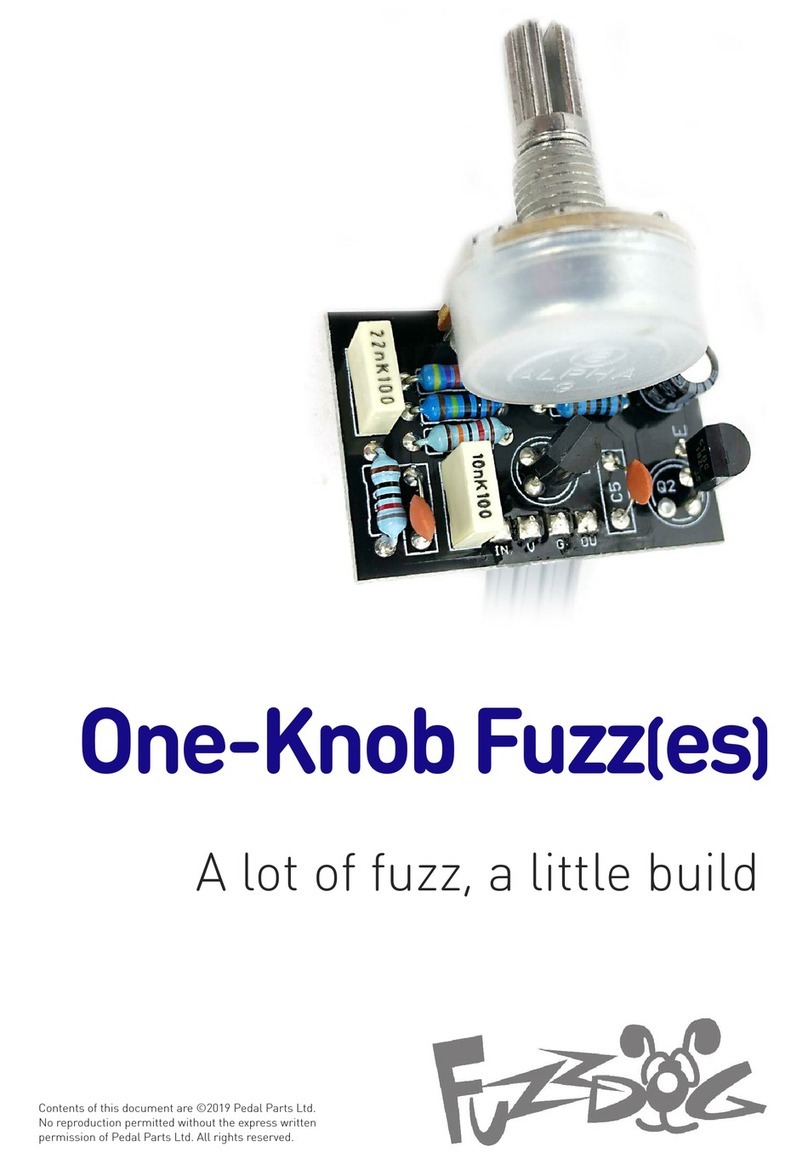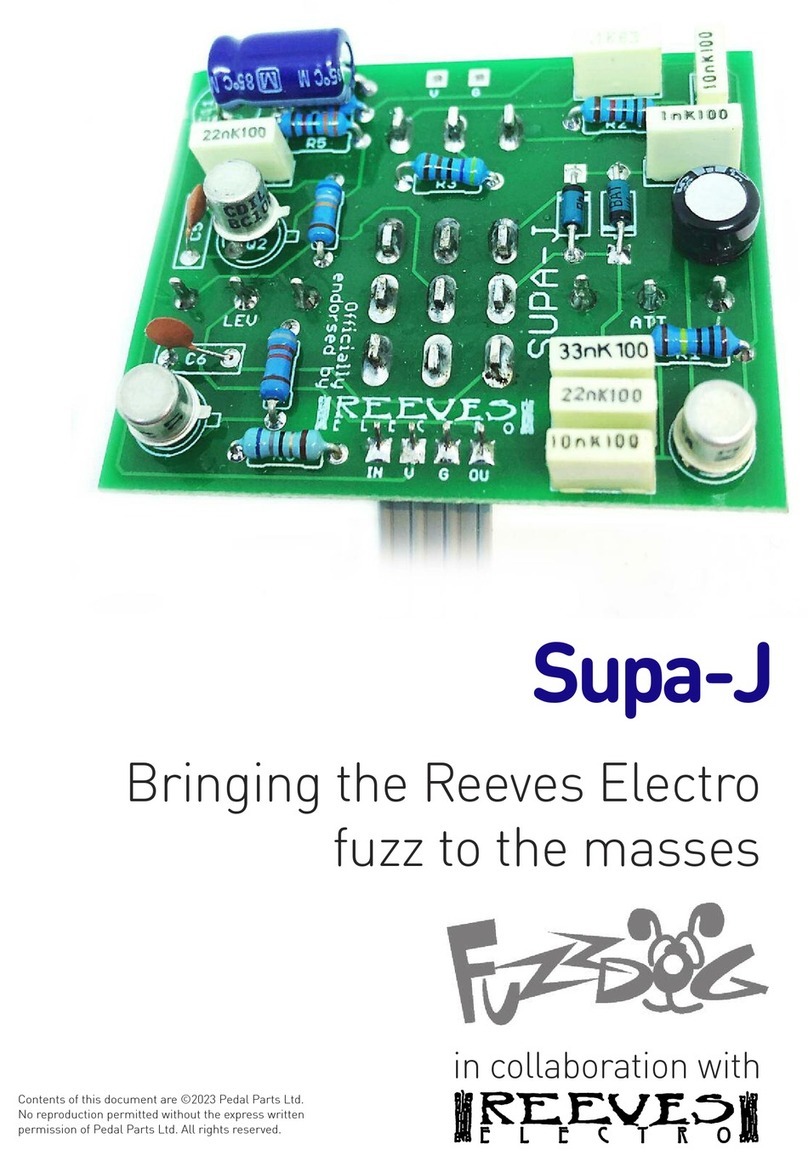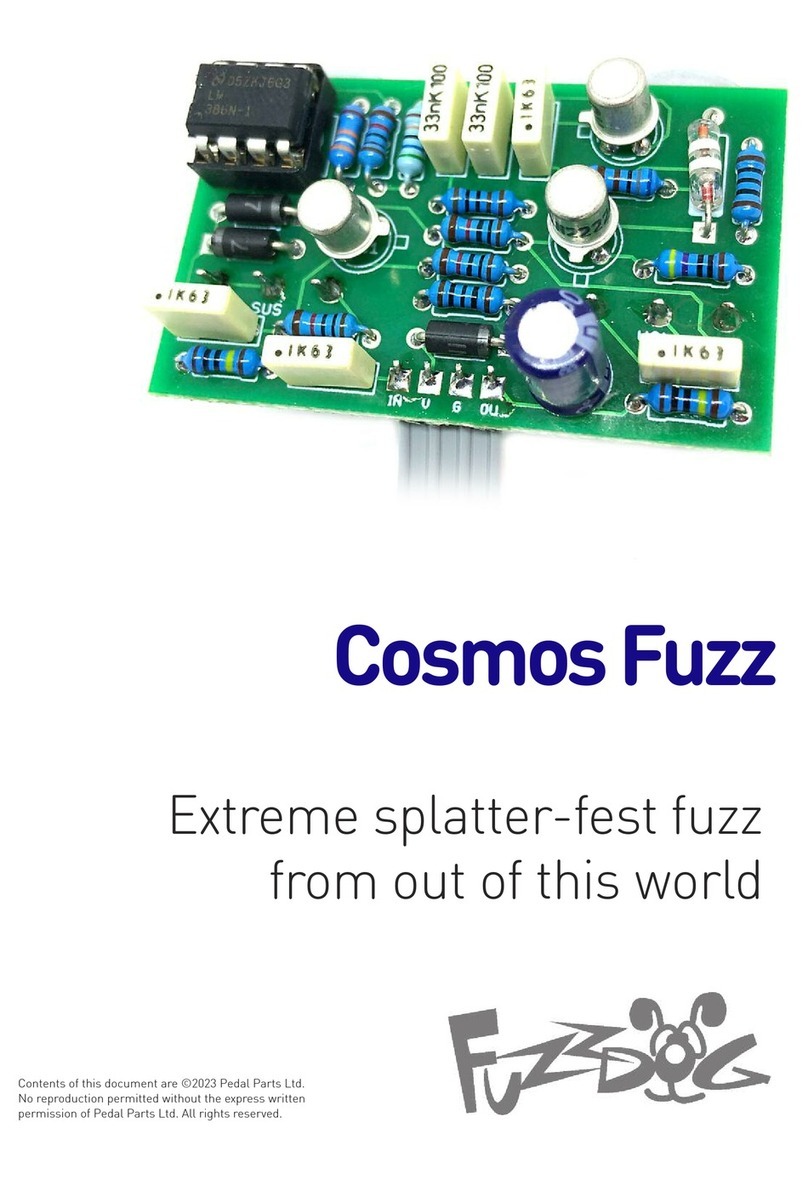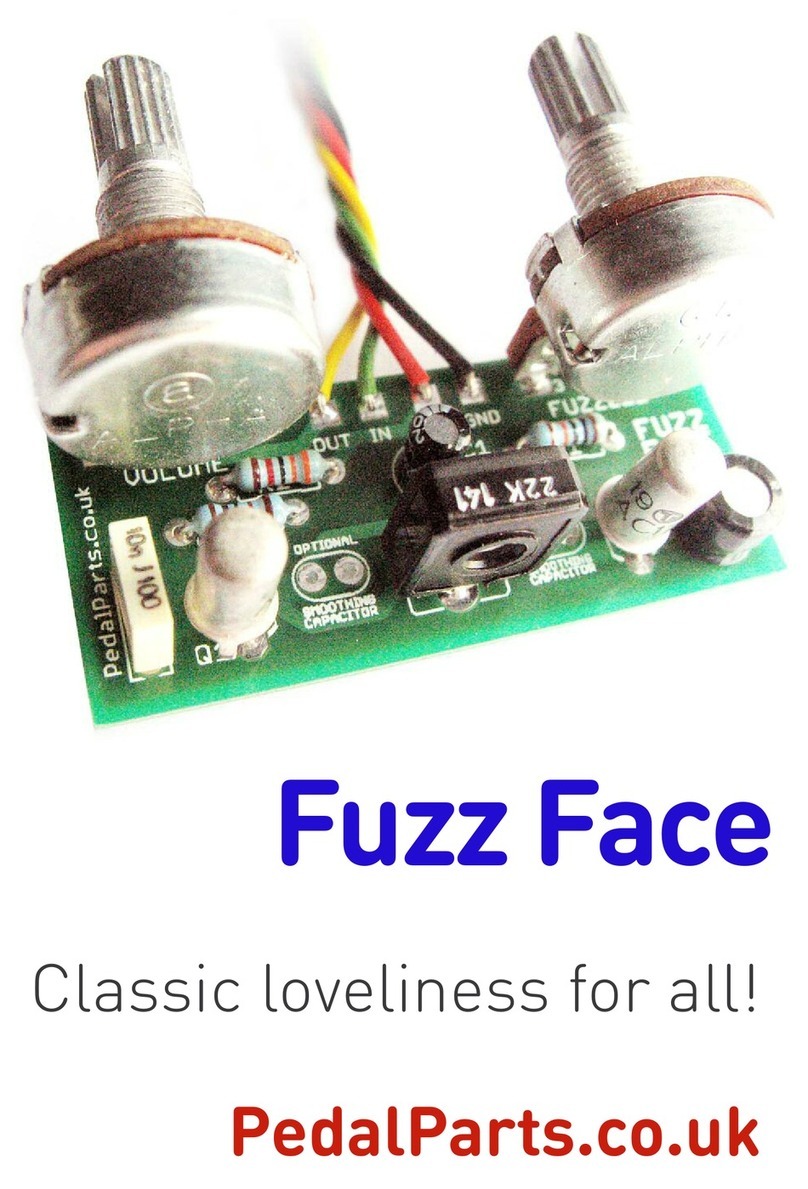
The power and signal pads on the CB conform to the FuzzDog Direct Connection format, so can
be paired with the appropriate daughterboard for quick and easy offboard wiring.
Be very careful when soldering the diodes, transistors and LED They’re very sensitive to heat. You
should use some kind of heat sink (crocodile clip or reverse action tweezers) on each leg as you
solder them. Keep exposure to heat to a minimum (under 2 seconds).
The glass case on the germanium diodes is very delicate and can be easily cracked. Use some
needle-nosed pliers to hold the leg, right up against the glass casing. Now bend the leg to 90° with
your fingers. The pliers will prevent strain where the leg meets the case.
If you have a 2N3565 in a TO-106 case (which looks like a small black pill with a rounded
top - see left), the emitter is the leg next to the small flattened edge. This should go into
the pad marked in red above. A standard TO-92 case version should mount with the flat
edge as shown on the CB.
The striped leg (cathode) of the diode go into
the square pad.
The long leg (anode) of the electrolytic
capacitors go into the square pads.
Snap the small metal tag off the pots so they
can be mounted flush in the box.
The toggle switch can mount on either side of
the board, depending how far you want it to be
from the pots. If you’re using a normal, wired
toggle switch, connect pad S2 to the centre
lug, S1 and S3 to the outer lugs.
CB Layout ©2015 edal arts Ltd.































